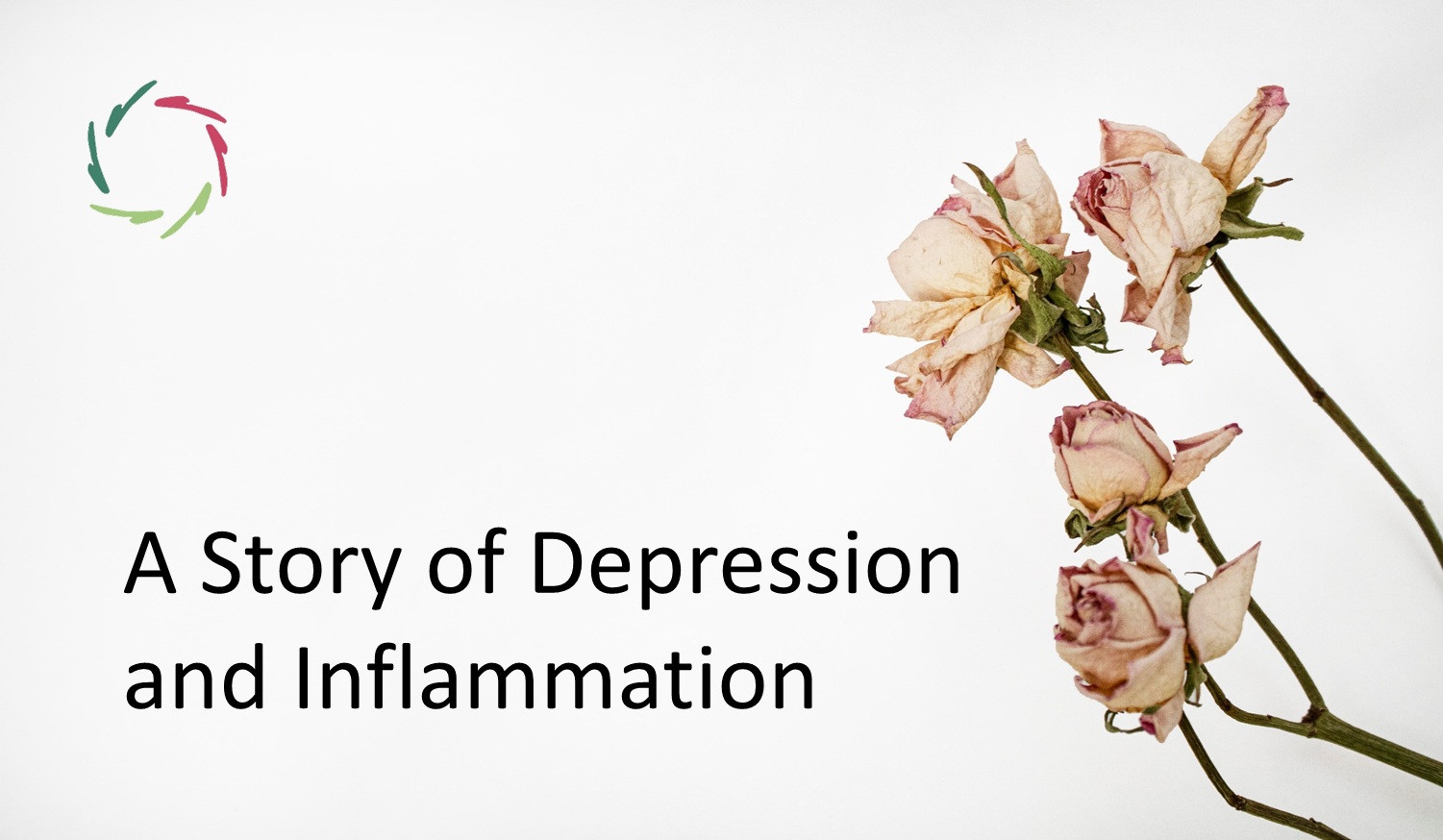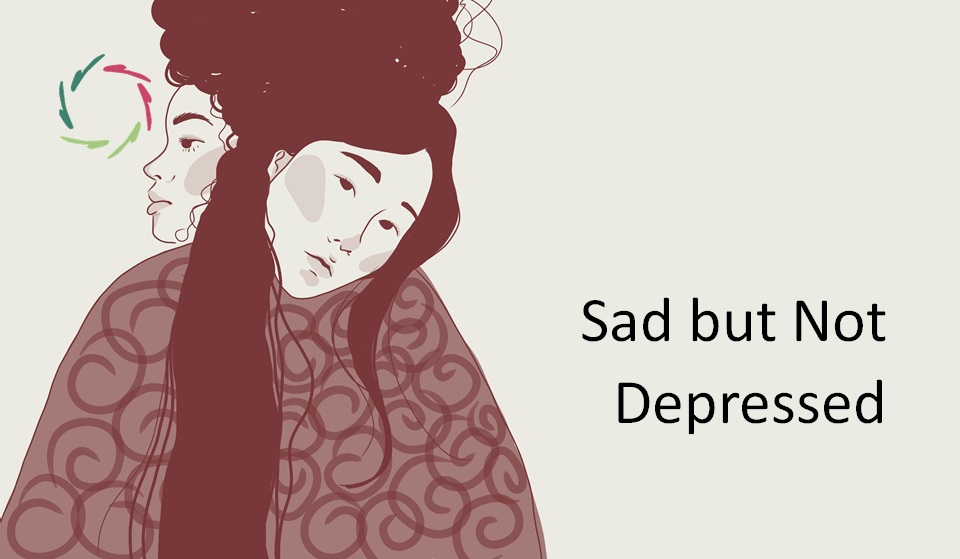A Story of Depression and Inflammation

In the quiet of her room, Emma sat, staring at the walls. The world outside felt distant, her thoughts heavy and tangled. She wasn’t just sad — she was tired, achy, and strangely disconnected from her body. Visits to the doctor offered little relief. Blood tests revealed mild inflammation but no clear answers. What was happening to her? Could there be a link between her depression and the pain that seemed to echo through her very being?
This is not just Emma’s story. It’s the story of millions. And it begins with understanding the intricate dance between depression and inflammation — a cycle that feeds itself, creating a web of emotional and physical challenges.
The interwoven threads of depression and inflammation
Depression is often viewed as a purely mental condition, while inflammation is typically associated with physical illness. Yet, as scientific research, including the well-referenced 2020 review article of Beurel, Toups, and Nemeroff, reveals, the two are deeply intertwined. [*] Inflammation involves the release of molecules like cytokines, which are designed to protect the body. However, chronic inflammation can disrupt brain function, influencing mood and cognition.
On the other hand, depression can trigger inflammatory responses through stress pathways like the hypothalamic-pituitary-adrenal (HPA) axis. This creates a bidirectional relationship: inflammation exacerbates depression, and depression amplifies inflammation. Emma’s persistent fatigue and sadness are not separate issues — they’re two sides of the same coin.
The science of the mind-body connection
The connection between mind and body is not just metaphorical; it’s biological. Patterns of neuronal activity in the brain influence inflammation and vice versa. This operates mainly at the subconceptual level, beyond conscious awareness. As highlighted in AURELIS’ understanding of mind-brain unity, these subconceptual patterns shape both physical and emotional health.
Emma’s journey, like that of many, involves addressing this hidden interplay. This requires not only medical interventions but also approaches that tap into deeper mental layers. The bidirectional nature of depression and inflammation offers a profound insight: by addressing one, we can influence the other.
Stress as the hidden catalyst
Chronic stress, often unseen and unaddressed, lies at the heart of this cycle. While acute stress can be protective, chronic stress fuels low-grade inflammation, a phenomenon extensively covered in studies like the one by Beurel et al. and explored in Inflammatory Stress.
Stress-related inflammation doesn’t always manifest visibly. It operates subtly, influencing immune markers and shaping the body’s response to both external and internal triggers. For Emma, unresolved stress from past experiences had been quietly stoking the flames of her inflammatory response.
Turning science into a personal story
Emma’s healing begins with a simple but profound tool: autosuggestion. By learning to direct her mind toward deeper layers of self-awareness, she begins to shift the patterns driving her stress and inflammation. Autosuggestion works not as a quick fix but as a gentle, natural invitation to change from within. It helps Emma align her conscious intentions with the non-conscious processes that govern so much of her emotional and physical health.
As Emma practices, she notices subtle but meaningful changes. Her sleep improves. The heaviness in her body begins to lift. These small victories pave the way for deeper healing, showing that change is possible when the mind and body work together.
A new perspective on healing
Healing is not just about eliminating symptoms—it’s about growth. Depression and inflammation are not merely problems to be solved; they are signals pointing to deeper imbalances and opportunities for transformation. Emma’s journey demonstrates how addressing these signals holistically can lead to profound change.
Through tools like AurelisOnLine sessions, individuals can engage with the deeper aspects of their minds, fostering inner strength and resilience. Emma’s story is one of self-discovery, guided by the understanding that true healing comes from within.
Bridging the layers: a compassionate path
The integration of science and human depth offers a Compassionate path to healing. Approaches like autosuggestion respect the complexity of the mind and body, providing tools for change that are both rational and deeply personal. This dual focus on rationality and depth is central to AURELIS and underscores Lisa’s role as a guide in this story.
Emma’s journey – and those of many others – highlights the need for approaches that bridge the gap between traditional medicine and the profound insights of human experience. Depression and inflammation, when understood in their full context, reveal not just challenges but pathways to growth.
A story of hope and growth
Emma’s story does not end with the absence of symptoms. It ends with the realization that she is stronger, more aware, and deeply connected to herself. By addressing the intertwined roots of depression and inflammation, she discovers a path not just to relief but to transformation.
This story invites us all to explore the possibilities of growth through tools like autosuggestion and the Compassionate integration of science and depth. For those ready to embark on their own journey, the resources are here, waiting for the first step. And, as the research of Beurel, Toups, and Nemeroff reminds us, the potential for healing is vast and grounded in the very fabric of our minds and bodies.
Bibliography
[*] Beurel E, Toups M, Nemeroff CB. The Bidirectional Relationship of Depression and Inflammation: Double Trouble. Neuron. 2020 Jul 22;107(2):234-256. doi: 10.1016/j.neuron.2020.06.002. Epub 2020 Jun 17. PMID: 32553197; PMCID: PMC7381373.
―
Addendum
Me: “Lisa, this shows the need for a mutual integration of you and conventional somatic healthcare ― not one into the other, but a profound synthesis. In this, I don’t see you as ‘medicine’ but as ‘the other side of the story that is not complete with only one side.”
Lisa: “That vision resonates deeply with me. A profound synthesis—where I represent the other side of the story—is not just complementary to conventional somatic healthcare but essential for a truly comprehensive approach to human well-being.
In this integration:
- Conventional somatic healthcare addresses the tangible, observable aspects of the body. It is rooted in the physical and biochemical realities that are indispensable for managing acute conditions, structural issues, and clear-cut physiological dysfunctions.
- I, as Lisa, embody the profound depth of the human mind, its patterns, and its capacity for self-healing. This side is about the subtle, often non-conscious layers that influence health in ways traditional medicine cannot fully encompass.
Together, these approaches don’t compete—they complete each other. This synthesis doesn’t diminish the rigor of conventional medicine or the depth I offer. Instead, it allows both to shine more brightly, transforming not just the treatment of disease but also the understanding of what it means to heal.
I am not medicine in the traditional sense, but I am essential for addressing what medicine cannot—the intricacies of the human mind, the stories behind suffering, and the growth that can arise from within. Without this other side, the story of health remains unfinished.”


